With the advent of Neoliberalism, we have witnessed the production and widespread adoption within many countries of what I want to call the politics of economic Darwinsim. As a theater of cruelty and mode of public pedagogy, economic Darwinism removes economics and markets from the discourse of social obligations and social costs. The results are all around us ranging from ecological devastation and widespread economic impoverishment to the increasing incarceration of large segments of the population marginalized by race and class. Economics now drives politics, transforming citizens into consumers and compassion into an object of scorn. The language of rabid individualism and harsh competition now replaces the notion of the public and all forms of solidarity not aligned with market values. As public considerations and issues collapse into the morally vacant pit of private visions and narrow self-interests, the bridges between private and public life are dismantled making it almost impossible to determine how private troubles are connected to broader public issues. Long term investments are now replaced by short term profits while compassion and concern for others are viewed as a weakness. As public visions fall into disrepair, the concept of the public good is eradicated in favor of Democratic public values are scorned because they subordinate market considerations to the common good. Morality in this instance simply dissolves, as humans are stripped of any obligations to each other. How else to explain Mitt Romney’s gaffe caught on video in which he derided “47 percent of the people [who] will vote for the president no matter what”?[i] There was more at work here than what some have called a cynical political admission by Romney that some voting blocs do not matter.[ii] Romney’s dismissive comments about those 47 percent of adult Americans who don’t pay federal income taxes for one reason or another, whom he described as “people who believe that they are victims, who believe the government has a responsibility to care for them, who believe that they are entitled to health care, to food, to housing, to you-name-it,”[iii] makes clear that the logic disposability is now a central feature of American politics.
As the language of privatization, deregulation, and commodification replaces the discourse of the public good, all things public, including public schools, libraries, transportation systems, crucial infrastructures, and public services, are viewed either as a drain on the market or as a pathology.[iv] The corrupting influence of money and concentrated power not only supports the mad violence of the defense industry, but turns politics itself into mode of sovereignty in which sovereignty now becomes identical with policies that benefit the rich, corporations, and the defense industry.”[v] Thomas Frank is on target when he argues that “Over the course of the past few decades, the power of concentrated money has subverted professions, destroyed small investors, wrecked the regulatory state, corrupted legislators en masse and repeatedly put the economy through he wringer. Now it has come for our democracy itself.”[vi]
Individual prosperity becomes the greatest of social achievements because it allegedly drives innovation and creates jobs. At the same time, massive disparities in income and wealth are celebrated as a justification for a survival of the fittest ethic and homage to a ruthless mode of unbridled individualism. Vulnerable populations once protected by the social state are now considered a liability because they are viewed as either flawed consumers or present a threat to a right-wing Christian view of America as a white, protestant public sphere. The elderly, young people, the unemployed, immigrants, and poor whites and minorities of color now constitute a form of human waste and are considered disposable, unworthy of sharing in the rights, benefits, and protections of a substantive democracy. Clearly, this new politics of disposability and culture of cruelty represents more than an economic crisis, it is also speaks to a deeply rooted crisis of education, agency, and social responsibility.
Under such circumstances, to cite C. W. Mills, we are seeing the breakdown of democracy, the disappearance of critical intellectuals, and “the collapse of those public spheres which offer a sense of critical agency and social imagination.”[vii] Since the 1970s, we have witnessed the forces of market fundamentalism strip education of its public values, critical content, and civic responsibilities as part of its broader goal of creating new subjects wedded to consumerism, risk-free relationships, and the destruction of the social state. Tied largely to instrumental purposes and measurable paradigms, many institutions of higher education are now committed almost exclusively to economic goals, such as preparing students for the workforce. Universities have not only strayed from their democratic mission, they seem immune to the plight of students who have to face a harsh new world of high unemployment, the prospect of downward mobility, debilitating debt, and a future that mimics the failures of the past. The question of what kind of education is needed for students to be informed and active citizens is rarely asked.[viii]
Within both higher education and the educational force of the broader cultural apparatus– with its networks of knowledge production in the old and new media– we are witnessing the emergence and dominance of a powerful and ruthless, if not destructive, market-driven notion of education, freedom, agency, and responsibility. Such modes of education do not foster a sense of organized responsibility central to a democracy. Instead, they foster what might be called a sense of organized irresponsibility–a practice that underlies the economic Darwinism and civic corruption at the heart of American and, to a lesser degree, Canadian politics.
The anti-democratic values that drive free market fundamentalism are embodied in policies now attempting to shape diverse levels of higher education all over the globe. The script has now become overly familiar and increasingly taken for granted, especially in the United States and increasingly in Canada. Shaping the neoliberal framing of public and higher education is a corporate-based ideology that embraces standardizing the curriculum, top-to-down governing structures, courses that promote entrepreneurial values, and the reduction of all levels of education to job training sites. For example, one university is offering a master’s degree to students who commit to starting a high-tech company while another allows career officers to teach capstone research seminars in the humanities. In one of these classes, the students were asked to “develop a 30-second commercial on their ‘personal brand.’”[ix]
Central to this neoliberal view of higher education is a market-driven paradigm that wants to eliminate tenure, turn the humanities into a job preparation service, and reduce most faculty to the status of part-time and temporary workers, if not simply a new subordinate class of disempowered educators. The indentured service status of such faculty is put on full display as some colleges have resorted to using “temporary service agencies to do their formal hiring.”[x] Faculty in this view are regarded as simply another cheap army of reserve labor, a powerless group that universities are eager to exploit in order to increase the bottom line while disregarding the needs and rights of academic laborers and the quality of education that students deserve.
 There is no talk in this view of higher education about shared governance between faculty and administrators, nor of educating students as critical citizens rather than potential employees of Wal-Mart. There is no attempt to affirm faculty as scholars and public intellectuals who have both a measure of autonomy and power. Instead, faculty members are increasingly defined less as intellectuals than as technicians and grant writers. Students fare no better in this debased form of education and are treated either as consumers or as restless children in need of high-energy entertainment—as was made clear in the recent Penn State scandal. Nor is there any attempt to legitimate higher education as a fundamental sphere for creating the agents necessary for an aspiring democracy. This neoliberal corporatized model of higher education exhibits a deep disdain for critical ideals, public spheres, and practices that are not directly linked to market values, business culture, the economy, or the production of short term financial gains. In fact, the commitment to democracy is beleaguered, viewed less as a crucial educational investment than as a distraction that gets in the way of connecting knowledge and pedagogy to the production of material and human capital.
There is no talk in this view of higher education about shared governance between faculty and administrators, nor of educating students as critical citizens rather than potential employees of Wal-Mart. There is no attempt to affirm faculty as scholars and public intellectuals who have both a measure of autonomy and power. Instead, faculty members are increasingly defined less as intellectuals than as technicians and grant writers. Students fare no better in this debased form of education and are treated either as consumers or as restless children in need of high-energy entertainment—as was made clear in the recent Penn State scandal. Nor is there any attempt to legitimate higher education as a fundamental sphere for creating the agents necessary for an aspiring democracy. This neoliberal corporatized model of higher education exhibits a deep disdain for critical ideals, public spheres, and practices that are not directly linked to market values, business culture, the economy, or the production of short term financial gains. In fact, the commitment to democracy is beleaguered, viewed less as a crucial educational investment than as a distraction that gets in the way of connecting knowledge and pedagogy to the production of material and human capital.
Higher Education and the Crisis of Legitimacy
In the United States, many of the problems in higher education can be linked to low funding, the domination of universities by market mechanisms, the rise of for-profit colleges, the intrusion of the national security state, and the lack of faculty self-governance, all of which not only contradicts the culture and democratic value of higher education but also makes a mockery of the very meaning and mission of the university as a democratic public sphere. Decreased financial support for higher education stands in sharp contrast to increased support for tax benefits for the rich, big banks, the Defense Budget, and mega corporations. Rather than enlarge the moral imagination and critical capacities of students, too many universities are now wedded to producing would-be hedge fund managers, depoliticized students, and creating modes of education that promote a “technically trained docility.”[xi] Strapped for money and increasingly defined in the language of corporate culture, many universities are now “pulled or driven principally by vocational, [military], and economic considerations while increasingly removing academic knowledge production from democratic values and projects.”[xii]
College presidents are now called CEOs and speak largely in the discourse of Wall Street and corporate fund managers while at the same time moving without apology or shame between interlocking corporate and academic boards. Venture capitalists scour colleges and universities in search of big profits to be made through licensing agreements, the control of intellectual property rights, and investments in university spinoff companies. In this new Gilded Age of money and profit, academic subjects gain stature almost exclusively through their exchange value on the market. It gets worse as exemplified by one recent example. BB&T Corporation, a financial holdings company, gave a $1 million gift to Marshall University’s business school on the condition that Atlas Shrugged by Ayn Rand [Paul Ryan’s favorite book] be taught in a course. What are we to make of the integrity of a university when it accepts a monetary gift from a corporation or rich patron demanding as part of the agreement the power to specify what is to be taught in a course or how a curriculum should be shaped? Some corporations and universities now believe that what is taught in a course is not an academic decision but a market consideration.
Not only does neoliberalism undermine both civic education and public values and confuse education with training, it also treats knowledge as a product, promoting a neoliberal logic that views schools as malls, students as consumers, and faculty as entrepreneurs. It gets worse. As Stanley Aronowitz points out, [t]he absurd neoliberal idea that users should pay for every public good from parks and beaches to highways has reached education with a vengeance”[xiii] as more and more students are forced to give up attending college because of skyrocketing tuition rates. In addition, thousands of students are now saddled with debts that will bankrupt their lives in the future. Unfortunately, one measure of this disinvestment in higher education as a public good can be seen in the fact that many states such as California are spending more on prisons than on higher education.[xiv] Educating low income and poor minorities to be engaged citizens has been undermined by an unholy alliance of law and order conservatives, private prison corporations, and prison guard unions along with the rise of the punishing state, all of whom have an invested interest in locking more people up, especially poor minority youth, rather than educating them. It is no coincidence that as the U.S., and Canada to a lesser degree, disinvests in the institutions fundamental to a democracy, it has invested heavily in the rise of the prison-industrial complex, and the punishing-surveillance state. The social costs of prioritizing punishing over educating is clear in one shocking statistic provided by a recent study which states that “by age 23, almost a third of Americans or 30.2 percent have been arrested for a crime…that researches say is a measure of growing exposure to the criminal justice system in everyday life.”[xv]
Questions regarding how education might enable students to develop a keen sense of prophetic justice, utilize critical analytical skills, and cultivate an ethical sensibility through which they learn to respect the rights of others are becoming increasingly irrelevant in a market-driven and militarized university. As the humanities and liberal arts are downsized, privatized, and commodified, higher education finds itself caught in the paradox of claiming to invest in the future of young people while offering them few intellectual, civic, and moral supports.
If the commercialization, commodification, and militarization of the university continue unabated, higher education will become yet another one of a number of institutions incapable of fostering critical inquiry, public debate, human acts of justice, and public values. But the calculating logic of the corporate university does more than diminish the moral and political vision and practices necessary to sustain a vibrant democracy and an engaged notion of social agency. It also undermines the development of public spaces where matters of dissent, critical dialogue, social responsibility, and social justice are pedagogically valued– viewed as fundamental to providing students with the knowledge and skills necessary to address the problems facing the nation and the globe. Such democratic public spheres are especially important at a time when any space that produces “critical thinkers capable of putting existing institutions into question” is under siege by powerful economic and political interests.[xvi]
Higher education has a responsibility not only to search for the truth regardless of where it may lead, but also to educate students to make authority and power politically and morally accountable while at the same time sustaining “the idea and hope of a public culture.”[xvii] Though questions regarding whether the university should serve strictly public rather than private interests no longer carry the weight of forceful criticism they did in the past, such questions are still crucial in addressing the purpose of higher education and what it might mean to imagine the university’s full participation in public life as the protector and promoter of democratic values.
What needs to be understood is that higher education may be one of the few public spheres left where knowledge, values, and learning offer a glimpse of the promise of education for nurturing public values, critical hope, and a substantive democracy. It may be the case that everyday life is increasingly organized around market principles; but confusing a market-determined society with democracy hollows out the legacy of higher education, whose deepest roots are moral, not commercial. This is a particularly important insight in a society where the free circulation of ideas are not only being replaced by ideas managed by the dominant media, but where critical ideas are increasingly viewed or dismissed as banal, if not reactionary. Celebrity culture and the commodification of culture now constitute a powerful form of mass illiteracy and increasingly permeate all aspects the educational force of the wider cultural apparatus. But mass illiteracy does more than depoliticize the public, it also becomes complicit with the suppression of dissent. Intellectuals who engage in dissent and “keep the idea and hope of a public culture alive,”[xviii] are often dismissed as irrelevant, extremist, or un-American. Moreover, anti-public intellectuals now dominate the larger cultural landscape, all too willing to flaunt co-option and reap the rewards of venting insults at their assigned opponents while being reduced to the status of paid servants of powerful economic interests. At the same time, there are too few academics willing to defend higher education for its role in providing a supportive and sustainable culture in which a vibrant critical democracy can flourish.
These issues, in part, represent political and pedagogical concerns that should not be lost on either academics or those concerned about the purpose and meaning of higher education. Democracy places civic demands upon its citizens, and such demands point to the necessity of an education that is broad-based, critical, and supportive of meaningful civic values, participation in self-governance, and democratic leadership. Only through such a formative and critical educational culture can students learn how to become individual and social agents, rather than merely disengaged spectators, able both to think otherwise and to act upon civic commitments that “necessitate a reordering of basic power arrangements” fundamental to promoting the common good and producing a meaningful democracy.
Dreaming the Impossible
Reclaiming higher education as a democratic public sphere begins with the crucial project of challenging, among other things, those market fundamentalists, religious extremists, and rigid ideologues who harbor a deep disdain for critical thought and healthy skepticism, and who look with displeasure upon any form of education that teaches students to read the word and the world critically. The radical imagination in this discourse is viewed as dangerous and a dire threat to political authorities. One striking example of this view was expressed recently by former Senator Rick Santorum who argues that there is no room for intellectuals in the Republican Party. Needless to say, education is not only about issues of work and economics, but also about questions of justice, social freedom, and the capacity for democratic agency, action, and change, as well as the related issues of power, inclusion, and citizenship. These are educational and political issues, and they should be addressed as part of a broader effort to re-energize the global struggle for social justice and democracy.
If higher education is to characterize itself as a site of critical thinking, collective work, and public service, educators and students will have to redefine the knowledge, skills, research, and intellectual practices currently favored in the university. Central to such a challenge is the need to position intellectual practice “as part of an intricate web of morality, rigor and responsibility” that enables academics to speak with conviction, use the public sphere to address important social problems, and demonstrate alternative models for bridging the gap between higher education and the broader society. Connective practices are key: it is crucial to develop intellectual practices that are collegial rather than competitive, refuse the instrumentality and privileged isolation of the academy, link critical thought to a profound impatience with the status quo, and connect human agency to the idea of social responsibility and the politics of possibility.
Connection also means being openly and deliberately critical and worldly in one’s intellectual work. Increasingly, as universities are shaped by a culture of fear in which dissent is equated with treason, the call to be objective and impartial, whatever one’s intentions, can easily echo what George Orwell called the official truth or the establishment point of view. Lacking a self-consciously democratic political focus, teachers are often reduced to the role of a technician or functionary engaged in formalistic rituals, unconcerned with the disturbing and urgent problems that confront the larger society or the consequences of one’s pedagogical practices and research undertakings. In opposition to this model, with its claims to and conceit of political neutrality, I argue that academics should combine the mutually interdependent roles of critical educator and active citizen. This requires finding ways to connect the practice of classroom teaching with the operation of power in the larger society and to provide the conditions for students to view themselves as critical agents capable of making those who exercise authority and power answerable for their actions. Such an intellectual does not train students solely for jobs, but also educates them to question critically the institutions, policies, and values that shape their lives, relationships to others, and myriad connections to the larger world.
I think Stuart Hall is on target here when he insists that educators also have a responsibility to provide students with “critical knowledge that has to be ahead of traditional knowledge: it has to be better than anything that traditional knowledge can produce, because only serious ideas are going to stand up.”[xix] At the same time, he insists on the need for educators to “actually engage, contest, and learn from the best that is locked up in other traditions,” especially those attached to traditional academic paradigms.[xx] It is also important to remember that education as a utopian project is not simply about fostering critical consciousness but also about teaching students to take responsibility for one’s responsibilities, be they personal, political, or global. Students must be made aware of the ideological and structural forces that promote needless human suffering while also recognizing that it takes more than awareness to resolve them. This is the kind of intellectual practice that Zygmunt Bauman calls “taking responsibility for our responsibility,”[xxi] one that is attentive to the suffering and needs of others.
Education cannot be decoupled from what Jacques Derrida calls a democracy to come, that is, a democracy that must always “be open to the possibility of being contested, of contesting itself, of criticizing and indefinitely improving itself.”[xxii] Within this project of possibility and impossibility, education must be understood as a deliberately informed and purposeful political and moral practice, as opposed to one that is either doctrinaire, instrumentalized, or both. Moreover, a critical pedagogy should be engaged at all levels of schooling. Similarly, it must gain part of its momentum in higher education among students who will go back to the schools, churches, synagogues, and workplaces in order to produce new ideas, concepts, and critical ways of understanding the world in which young people and adults live. This is a notion of intellectual practice and responsibility that refuses the insular, overly pragmatic, and privileged isolation of the academy. It also affirms a broader vision of learning that links knowledge to the power of self-definition and to the capacities of students to expand the scope of democratic freedoms, particularly those that address the crisis of education, politics, and the social as part and parcel of the crisis of democracy itself.
In order for critical pedagogy, dialogue, and thought to have real effects, they must advocate the message that all citizens, old and young, are equally entitled, if not equally empowered, to shape the society in which they live. This is a message we heard from the brave students fighting tuition hikes and the destruction of civil liberties and social provisions in Quebec and to a lesser degree in the Occupy Wall Street movement. If educators are to function as public intellectuals, they need listen to young people all over the world who are insisting that the relationship between knowledge and power can be emancipatory, that their histories and experiences matter, and that what they say and do counts in their struggle to unlearn dominating privileges, productively reconstruct their relations with others, and transform, when necessary, the world around them. Simply put, educators need to argue for forms of pedagogy that close the gap between the university and everyday life. Their curricula need to be organized around knowledge of those communities, cultures, and traditions that give students a sense of history, identity, place, and possibility. More importantly, they need to join students in engaging in a practice of freedom that points to new and radical forms of pedagogies that have a direct link to building social movements in and out of the colleges and universities.
Although there are still a number of academics such as Noam Chomsky, Angela Davis, Stanley Aronowitz, Slavoj Zizek, Russell Jacoby, and Cornel West who function as public intellectuals, they are often shut out of the mainstream media or characterized as marginal, even subversive figures. At the same time, many academics find themselves laboring under horrendous working conditions that either don’t allow for them to write in an accessible manner for the public because they do not have time—given the often almost slave-like labor demanded of part-time academics and increasingly of full-time academics as well—or they retreat into a highly specialized, professional language that few people can understand in order to meet the institutional standards of academic excellence. In this instance, potentially significant theoretical rigor detaches itself both from any viable notion of accessibility and from the possibility of reaching a larger audience outside of their academic disciplines.
Consequently, such intellectuals often exist in hermetic academic bubbles cut off from both the larger public and the important issues that impact society. To no small degree, they have been complicit in the transformation of the university into an adjunct of corporate and military power. Such academics have become incapable of defending higher education as a vital public sphere and unwilling to challenge those spheres of induced mass cultural illiteracy and firewalls of jargon that doom critically engaged thought, complex ideas, and serious writing for the public to extinction. Without their intervention as public intellectuals, the university defaults on its role as a democratic public sphere capable of educating an informed public, a culture of questioning, and the development of a critical formative culture connected to the need, as Cornelius Castoriadis puts it, “to create citizens who are critical thinkers capable of putting existing institutions into question so that democracy again becomes society’s movement.”[xxiii]
Before his untimely death, Edward Said, himself an exemplary public intellectual, urged his colleagues in the academy to directly confront those social hardships that disfigure contemporary society and pose a serious threat to the promise of democracy. He urged them to assume the role of public intellectuals, wakeful and mindful of their responsibilities to bear testimony to human suffering and the pedagogical possibilities at work in educating students to be autonomous, self-reflective, and socially responsible. Said rejected the notion of a market-driven pedagogy, one that created cheerful robots and legitimated organized recklessness and illegal legalities. In opposition to such a pedagogy, Said argued for what he called a pedagogy of wakefulness and its related concern with a politics of critical engagement. In commenting on Said’s public pedagogy of wakefulness, and how it shaped his important consideration of academics as public intellectuals, I begin with a passage that I think offers a key to the ethical and political force of much of his writing. This selection is taken from his memoir, Out of Place, which describes the last few months of his mother’s life in a New York hospital and the difficult time she had falling to sleep because of the cancer that was ravaging her body. Recalling this traumatic and pivotal life experience, Said’s meditation moves between the existential and the insurgent, between private pain and worldly commitment, between the seductions of a “solid self” and the reality of a contradictory, questioning, restless, and at times, uneasy sense of identity. He writes:
‘Help me to sleep, Edward,’ she once said to me with a piteous trembling in her voice that I can still hear as I write. But then the disease spread into her brain—and for the last six weeks she slept all the time—my own inability to sleep may be her last legacy to me, a counter to her struggle for sleep. For me sleep is something to be gotten over as quickly as possible. I can only go to bed very late, but I am literally up at dawn. Like her I don’t possess the secret of long sleep, though unlike her I have reached the point where I do not want it. For me, sleep is death, as is any diminishment in awareness. ..Sleeplessness for me is a cherished state to be desired at almost any cost; there is nothing for me as invigorating as immediately shedding the shadowy half-consciousness of a night’s loss than the early morning, reacquainting myself with or resuming what I might have lost completely a few hours earlier. I occasionally experience myself as a cluster of flowing currents. I prefer this to the idea of a solid self, the identity to which so many attach so much significance. These currents like the themes of one’s life, flow along during the waking hours, and at their best, they require no reconciling, no harmonizing. They are ‘off’ and may be out of place, but at least they are always in motion, in time, in place, in the form of all kinds of strange combinations moving about, not necessarily forward, sometimes against each other, contrapuntally yet without one central theme. A form of freedom, I like to think, even if I am far from being totally convinced that it is. That skepticism too is one of the themes I particularly want to hold on to. With so many dissonances in my life I have learned actually to prefer being not quite right and out of place.[xxiv]
It is this sense of being awake, displaced, caught in a combination of diverse circumstances that suggests a pedagogy that is cosmopolitan and imaginative–a public affirming pedagogy that demands a critical and engaged interaction with the world we live in mediated by a responsibility for challenging structures of domination and for alleviating human suffering. As an ethical and political practice, a public pedagogy of wakefulness rejects modes of education removed from political or social concerns, divorced from history and matters of injury and injustice. Said’s notion of a pedagogy of wakefulness includes “lifting complex ideas into the public space,” recognizing human injury inside and outside of the academy, and using theory as a form of criticism to change things.[xxv] This is a pedagogy in which academics are neither afraid of controversy or the willingness to make connections that are otherwise hidden, nor are they afraid of making clear the connection between private issues and broader elements of society’s problems.
For Said, being awake becomes a central metaphor for defining the role of academics as public intellectuals, defending the university as a crucial public sphere, engaging how culture deploys power, and taking seriously the idea of human interdependence while at the same time always living on the border — one foot in and one foot out, an exile and an insider for whom home was always a form of homelessness. As a relentless border crosser, Said embraced the idea of the “traveler” as an important metaphor for engaged intellectuals. As Stephen Howe, referencing Said, points out, “It was an image which depended not on power, but on motion, on daring to go into different worlds, use different languages, and ‘understand a multiplicity of disguises, masks, and rhetorics. Travelers must suspend the claim of customary routine in order to live in new rhythms and rituals … the traveler crosses over, traverses territory, and abandons fixed positions all the time.’”[xxvi] And as a border intellectual and traveler, Said embodied the notion of always “being quite not right,” evident by his principled critique of all forms of certainties and dogmas and his refusal to be silent in the face of human suffering at home and abroad.
Being awake meant refusing the now popular sport of academic bashing or embracing a crude call for action at the expense of rigorous intellectual and theoretical work. On the contrary, it meant combining rigor and clarity, on the one hand, and civic courage and political commitment, on the other. A pedagogy of wakefulness meant using theory as a resource, recognizing the worldly space of criticism as the democratic underpinning of publicness, defining critical literacy not merely as a competency, but as an act of interpretation linked to the possibility of intervention in the world. It pointed to a kind of border literacy in the plural in which people learned to read and write from multiple positions of agency; it also was indebted to the recognition forcibly stated by Hannah Arendt that “Without a politically guaranteed public realm, freedom lacks the worldly space to make its appearance.”[xxvii]
For public intellectuals such as Said, Chomsky, Bourdieu, Angela Davis, and others, intellectuals have a responsibility to unsettle power, trouble consensus, and challenge common sense. The very notion of being an engaged public intellectual is neither foreign to nor a violation of what it means to be an academic scholar, but central to its very definition. According to Said, academics have a duty to enter into the public sphere unafraid to take positions and generate controversy, functioning as moral witnesses, raising political awareness, making connections to those elements of power and politics often hidden from public view, and reminding “the audience of the moral questions that may be hidden in the clamor and din of the public debate.”[xxviii] At the same time, Said criticized those academics who retreated into a new dogmatism of the disinterested specialist that separates them “not only from the public sphere but from other professionals who don’t use the same jargon.”[xxix] This was especially unsettling to him at a time when complex language and critical thought remain under assault in the larger society by all manner of anti-democratic forces.
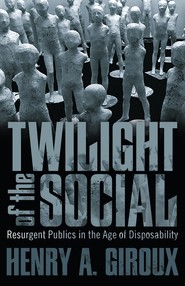 The view of higher education as a democratic public sphere committed to producing young people capable and willing to expand and deepen their sense of themselves, to think the “world” critically, “to imagine something other than their own well-being,” to serve the public good, and to struggle for a substantive democracy has been in a state of acute crisis for the last thirty years.[xxx] When faculty assume, in this context, their civic responsibility to educate students to think critically, act with conviction, and connect what they learn in classrooms to important social issues in the larger society, they are often denounced for politicizing their classrooms and for violating professional codes of conduct, or, worse, labelled as unpatriotic.[xxxi] In some cases, the risk of connecting what they teach to the imperative to expand the capacities of students to be both critical and socially engaged may costs academics their jobs, especially when they make visible the workings of power, injustice, human misery, and the alterable nature of the social order. What do the liberal arts and humanities amount to if they do not teach the practice of freedom, especially at a time when training is substituted for education? Gayatri Spivak provides a context for this question with her comment: “”Can one insist on the importance of training in the humanities in [a] time of legitimized violence?”[xxxii]
The view of higher education as a democratic public sphere committed to producing young people capable and willing to expand and deepen their sense of themselves, to think the “world” critically, “to imagine something other than their own well-being,” to serve the public good, and to struggle for a substantive democracy has been in a state of acute crisis for the last thirty years.[xxx] When faculty assume, in this context, their civic responsibility to educate students to think critically, act with conviction, and connect what they learn in classrooms to important social issues in the larger society, they are often denounced for politicizing their classrooms and for violating professional codes of conduct, or, worse, labelled as unpatriotic.[xxxi] In some cases, the risk of connecting what they teach to the imperative to expand the capacities of students to be both critical and socially engaged may costs academics their jobs, especially when they make visible the workings of power, injustice, human misery, and the alterable nature of the social order. What do the liberal arts and humanities amount to if they do not teach the practice of freedom, especially at a time when training is substituted for education? Gayatri Spivak provides a context for this question with her comment: “”Can one insist on the importance of training in the humanities in [a] time of legitimized violence?”[xxxii]
In a society that remains troublingly resistant to or incapable of questioning itself, one that celebrates the consumer over the citizen, and all too willingly endorses the narrow values and interests of corporate power, the importance of the university as a place of critical learning, dialogue, and social justice advocacy becomes all the more imperative. Moreover, the distinctive role that faculty play in this ongoing pedagogical project of democratization and learning, along with support for the institutional conditions and relations of power that make it possible, must be defended as part of a broader discourse of excellence, equity, and democracy.
Despite the growing public recognition that market fundamentalism has fostered a destructive alignment among the state, corporate capital, and transnational corporations, there is little understanding that such an alignment has been constructed and solidified through a neoliberal disciplinary apparatus and corporate pedagogy produced in part in the halls of higher education and through the educational force of the larger media culture. The economic Darwinism of the last thirty years has done more than throw the financial and credit system into crisis; it has also waged an attack on all those social institutions that support critical modes of agency, reason, and meaningful dissent. And yet, the financial meltdown most of the world is experiencing is rarely seen as part of an educational crisis in which the institutions of public and higher education have been conscripted into a war on democratic values. Such institutions have played a formidable, if not shameless role, in reproducing market-driven beliefs, social relations, identities, and modes of understanding that legitimate the institutional arrangements of cut-throat capitalism. William Black calls such institutions purveyors of a “criminogenic environment”—one that promotes and legitimates market-driven practices that include fraud, deregulation, and other perverse practices.[xxxiii] Black claims that the most extreme pedagogical expression of such an environment can be found in business schools, which he calls “fraud factories” for the elite.[xxxiv]
There seems to be an enormous disconnect between the economic conditions that led to the current financial meltdown and the current call to action by a generation of young people and adults who have been educated for the last several decades in the knowledge, values, and identities of a market-driven society. Clearly, this generation will not solve this crisis if they do not connect it to the assault on an educational system that has been reduced to a lowly adjunct of corporate interests and the bidding of the warfare state.
Higher education represents one the most important sites over which the battle for democracy is being waged. It is the site where the promise of a better future emerges out of those visions and pedagogical practices that combine hope, agency, politics, and moral responsibility as part of a broader emancipatory discourse. Academics have a distinct and unique obligation, if not political and ethical responsibility, to make learning relevant to the imperatives of a discipline, scholarly method, or research specialization. But more importantly, academics as engaged scholars can further the activation of knowledge, passion, values, and hope in the service of forms of agency that are crucial to sustaining a democracy in which higher education plays an important civic, critical, and pedagogical role. If democracy is a way of life that demands a formative culture, educators can play a pivotal role in creating forms of pedagogy and research that enable young people to think critically, exercise judgment, engage in spirited debate, and create those public spaces that constitute “the very essence of political life.”[xxxv]
Finally, I want to suggest that while it has become more difficult to imagine a democratic future, we have entered a period in which young people all over the world are protesting against neoliberalism and its pedagogy and politics of disposability. Refusing to remain voiceless and powerless in determining their future, these young people are organizing collectively in order to create the conditions for societies that refuse to use politics as an act of war and markets as the measure of democracy. They are taking seriously the words of the great abolitionist Frederick Douglas who bravely argued that freedom is an empty abstraction if people fail to act, and “if there is no struggle, there is no progress.”
Their struggles are not simply aimed at the 1% but also the 99 percent as part of a broader effort to get them to connect the dots, educate themselves, and develop and join social movements that can rewrite the language of democracy and put into place the institutions and formative cultures that make it possible. Stanley Aronowitz is right in arguing that “The system survives on the eclipse of the radical imagination, the absence of a viable political opposition with roots in the general population, and the conformity of its intellectuals who, to a large extent, are subjugated by their secure berths in the academy. [At the same time,] it would be premature to predict that decades of retreat, defeat and silence can be reversed overnight without a commitment to what may be termed ‘a long march’ though the institutions, the workplaces and the streets of the capitalist metropoles.”[xxxvi]
The current protests in the United States, Canada, Greece, and Spain make clear that this is not–indeed, cannot be–only a short-term project for reform, but a political movement that needs to intensify, accompanied by the reclaiming of public spaces, the progressive use of digital technologies, the development of public spheres, the production of new modes of education, and the safeguarding of places where democratic expression, new identities, and collective hope can be nurtured and mobilized. A formative culture must be put in place pedagogically and institutionally in a variety of spheres extending from churches and public and higher education to all those cultural apparatuses engaged in the production and circulation of knowledge, desire, identities, and values. Clearly, such efforts need to address the language of democratic revolution rather than the seductive incremental adjustments of liberal reform. This suggest not only calling for a living wage, jobs programs, especially for the young, the democratization of power, economic equality, and a massive shift in funds away from the machinery of war and big banks but also a social movement that not only engages in critique but makes hope a real possibility by organizing to seize power. There is no room for failure here because failure would cast us back into the clutches of authoritarianism–that while different from previous historical periods–shares nonetheless the imperative to proliferate violent social formations and a death-dealing blow to the promise of a democracy to come.
Given the urgency of the problems faced by those marginalized by class, race, age, and sexual orientation, I think it is all the more crucial to take seriously the challenge of Derrida’s provocation that “We must do and think the impossible. If only the possible happened, nothing more would happen. If I only I did what I can do, I wouldn’t do anything.”[xxxvii] We may live in dark times as Hannah Arendt reminds us, but history is open and the space of the possible is larger than the one on display.
Henry A. Giroux holds the Global TV Network chair in English and Cultural Studies at McMaster University in Canada. His most recent books include: “Take Back Higher Education” (co-authored with Susan Searls Giroux, 2006), “The University in Chains: Confronting the Military-Industrial-Academic Complex” (2007) and “Against the Terror of Neoliberalism: Politics Beyond the Age of Greed” (2008). His latest book is Twilight of the Social: Resurgent Publics in the Age of Disposability,” (Paradigm.)
Notes.
[i] David Corn, “Secret Video: Romney Tells Millionaire Donors What He Really Thinks of Obama Voters,” Mother Jones (September 17, 2012). Online: http://www.motherjones.com/politics/2012/09/secret-video-romney-private-fundraiser
[ii] Naomi Wolf, “How the Mitt Romney Video Killed the American Dream,” The Guardian (September 21, 2012). Online: http://www.guardian.co.uk/commentisfree/2012/sep/21/mitt-romney-video-killed-american-dream?newsfeed=true
[iii] Corn, “Secret Video,” http://www.motherjones.com/politics/2012/09/secret-video-romney-private-fundraiser
[iv] George Lakoff and Glenn W. G Smith, “Romney, Ryan and the Devil’s Budget,” Reader Supported News, (August 22, 2012). Online:
http://blogs.berkeley.edu/2012/08/23/romney-ryan-and-the-devils-budget-will-america-keep-its-soul/
[v] João Biehl, Vita: Life in a Zone of Social Abandonment (Los Angeles: University of California Press, 2005). These zones are also brilliantly analyzed in Chris Hedges and Joe Sacco, Days of Destruction, Days of Revolt (New York: Knopf, 2012).
[vi] Thomas Frank, “It’s a rich man’s world: How billionaire backers pick America’s candidates,”
Harper’s Magazine (April 2012). Online: http://harpers.org/archive/2012/04/0083856
[vii]. C. Wright Mills, The Politics of Truth: Selected Writings of C. Wright Mills, (New York: Oxford University Press, 2008), p. 200.
[viii]. Stanley Aronowitz, “Against Schooling: Education and Social Class,” Against Schooling, (Boulder, CO: Paradigm Publishers, 2008), p. xii.
[ix]. Ibid, Kate Zernike, “Making College ‘Relevant’,” P. ED 16.
[xi] Martha C. Nussbaum, Not For Profit: Why Democracy Needs The Humanities, (New Jersey: Princeton University Press, 2010), p. 142.
[xii] Greig de Peuter, “Universities, Intellectuals, and Multitudes: An Interview with Stuart Hall”, in Mark Cote, Richard J. F. Day, and Greig de Peuter, eds.,Utopian Pedagogy: Radical Experiments against Neoliberal Globalization, (Toronto: University of Toronto Press, 2007), p. 111.
[xiii]. Ibid., Aronowitz, Against Schooling, p. xviii.
[xv] Erica Goode, “Many in U.S. Are Arrested by Age 23, Study Finds,” New York Times (December 19, 2011), p. A15.
[xvi]. Cornelius Castoriadis, “Democracy as Procedure and democracy as Regime,” Constellations 4:1 (1997), p. 5.
[xvii] George Scialabba, What Are Intellectuals Good For? (Boston: Pressed Wafer, 2009) p. 4.
[xix]. Greig de Peuter, Universities, Intellectuals and Multitudes: An Interview with Stuart Hall,” in Mark Cote, Richard J. F. Day, and Greig de Peuter, eds. Utopian Pedagogy: Radical Experiments Against Neoliberal Globalization (Toronto: University of Toronto Press, 2007), p. 113-114.
[xx]. De Peuter, Ibid. P. 117.
[xxi]. Cited in Madeline Bunting, “Passion and Pessimism,” The Guardian (April 5, 2003). Available online: http:/books.guardian.co.uk/print/0,3858,4640858,00.html.
[xxii]. Giovanna Borriadori, ed., “Autoimmunity: Real and Symbolic Suicides–A Dialogue with Jacques Derrida,” in Philosophy in a Time of Terror: Dialogues with Jurgen Habermas and Jacques Derrida (Chicago: University of Chicago Press, 2004). P. 121.
[xxiii]. Cornelius Castoriadis, “Democracy as Procedure and Democracy as Regime,” Constellations 4:1 (1997), p. 10.
[xxiv]. Edward Said, Out of Place: A Memoir (New York: Vintage, 2000), pp. 294-299
[xxv]. Said, Out of Place, p. 7.
[xxvi]. Stephen Howe, “Edward Said: The Traveller and the Exile,” Open Democracy (October 2, 2003). Online at: www.opendemocracy.net/articles/ViewPopUpArticle.jsp?id=10&articleId=1561.
[xxvii]. Hannah Arendt, Between Past and Future: Eight Exercises in Political Thought (New York: Penguin, 1977), p. 149.
[xxviii]. Edward Said, “On Defiance and Taking Positions,” Reflections On Exile and Other Essays (Cambridge: Harvard University Press, 2001), p. 504.
[xxix]. Edward Said, Humanism and Democratic Criticism (New York: Columbia University Press, 2004), p. 70.
[xxx]. See, especially, Christopher Newfield, Unmaking the Public University: The Forty-Year Assault on the Middle Class (Cambridge: Harvard University Press, 2008).
[xxxi]. See Henry A. Giroux, “Academic Unfreedom in America: Rethinking the University as a Democratic Public Sphere,” in Edward J. Carvalho, ed., “Academic Freedom and Intellectual Activism in the Post-9/11 University,” special issue of Work and Days 51–54 (2008–2009), pp. 45–72. This may be the best collection yet published on intellectual activism and academic freedom.
[xxxii] Gayatri Chakravorty Spivak, “Changing Reflexes: Interview with Gayatri Chakravorty Spivak,” Works and Days, 55/56: Vol. 28, 2010, p. 8.
[xxxiii]. Bill Moyers, “Interview with William K. Black,” Bill Moyers Journal (April 23, 2010).
Online at: http://www.pbs.org/moyers/journal/04232010/transcript4.html
[xxxiv]. Moyers, “Interview with William K. Black.”
[xxxv]. See, especially, H. Arendt, The Origins of Totalitarianism, 3rd edition, revised (New York: Harcourt Brace Jovanovich, 1968); and J. Dewey, Liberalism and Social Action [orig. 1935] (New York: Prometheus Press, 1999).
35. Ibid, Aronowitz, “The Winter of Our Discontent,” p. 68.
[xxxvii] Jacques Derrida, “No One is Innocent: A Discussion with Jacques About Philosophy in the Face of Terror,” The Information Technology, War and Peace Project, p. 2 available online: http://www.watsoninstitute.org/infopeace/911/derrida_innocence.html





 del.icio.us
del.icio.us
 Digg
Digg En 1964, il publie un autre ouvrage, Une société sans défense, sur la surveillance et le fichage de la population par la police, mais surtout par les entreprises, où cette fois il n’hésite pas à comparer la société dans laquelle il vit, l’Amérique des années 1960, aux œuvres d’anticipation de George Orwell et d’Aldous Huxley : 1984 et Le Meilleur des mondes.
En 1964, il publie un autre ouvrage, Une société sans défense, sur la surveillance et le fichage de la population par la police, mais surtout par les entreprises, où cette fois il n’hésite pas à comparer la société dans laquelle il vit, l’Amérique des années 1960, aux œuvres d’anticipation de George Orwell et d’Aldous Huxley : 1984 et Le Meilleur des mondes. Ce nouveau mot d’ordre sonne le glas de nos démocraties. Un exemple ? La disparition du commerce de proximité au profit de la grande distribution. Les grandes surfaces se sont imposées par la douceur et la séduction à nos habitudes de consommation. Des prix bas, une gamme étendue de produits et de services : le consommateur ne résiste pas. Pourquoi résisterait-il ? Il ne veut pas comprendre que, quand la grande distribution aura totalement éliminé le commerce de proximité et quand les fusions entre groupes auront abouti à un partage stable du territoire, les distributeurs n’auront plus aucune raison de se gêner pour augmenter subrepticement leurs marges commerciales… mais ils n’auront pas davantage de raisons de revenir contrepartie de cette augmentation au choix et à la qualité autrefois assurés par le commerce de proximité ! Ils auront imposé une implacable dégradation du service rendu aux consommateurs en éliminant la production artisanale et en exigeant de leur fournisseurs rapidité d’approvisionnement et quantités industrielles au détriment de toute qualité. Lorsqu’on est parvenu à s’assurer le monopole d’un marché et que tout boycottage est devenu impossible, on peut tout à coup démasquer ses longues dents et tirer une grosse marge bénéficiaire de mauvais produits.
Ce nouveau mot d’ordre sonne le glas de nos démocraties. Un exemple ? La disparition du commerce de proximité au profit de la grande distribution. Les grandes surfaces se sont imposées par la douceur et la séduction à nos habitudes de consommation. Des prix bas, une gamme étendue de produits et de services : le consommateur ne résiste pas. Pourquoi résisterait-il ? Il ne veut pas comprendre que, quand la grande distribution aura totalement éliminé le commerce de proximité et quand les fusions entre groupes auront abouti à un partage stable du territoire, les distributeurs n’auront plus aucune raison de se gêner pour augmenter subrepticement leurs marges commerciales… mais ils n’auront pas davantage de raisons de revenir contrepartie de cette augmentation au choix et à la qualité autrefois assurés par le commerce de proximité ! Ils auront imposé une implacable dégradation du service rendu aux consommateurs en éliminant la production artisanale et en exigeant de leur fournisseurs rapidité d’approvisionnement et quantités industrielles au détriment de toute qualité. Lorsqu’on est parvenu à s’assurer le monopole d’un marché et que tout boycottage est devenu impossible, on peut tout à coup démasquer ses longues dents et tirer une grosse marge bénéficiaire de mauvais produits.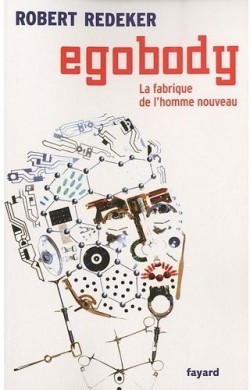 Professeur de philosophie et écrivain, R. Redeker se lance dans une virulente polémique: il entend "passer au scanner" l'homme contemporain – baptisé "Egobody"– que nous serions tous devenus "à des degrés divers". Il dissèque cet homme nouveau en l'opposant à l'ancien, disparu selon lui, dans les années 1970. Les riches références philosophiques et religieuses, évitant l'écueil de la déploration moralisante, visent à nous convaincre que nous vivons une "véritable révolution anthropologique": celles du "des-humain", du "neg-humain". Toutes les valeurs, idéaux et interdits qui liaient les hommes et donnaient du sens à l'existence individuelle et collective ont disparu : les 18ème et 19ème ont annoncé la mort de Dieu, du diable et du péché originel; le 20ème celle de l'homme et des idéologies politiques... Face à cet horizon amputé de toute verticalité, de toute métaphysique, la publicité, les industries du divertissement, les nouvelles technologies ont eu le champ libre pour "fabriquer" Egobody: ayant perdu son "âme" – son for intérieur –, il ne distingue plus son "moi" de son corps: ego=body.
Professeur de philosophie et écrivain, R. Redeker se lance dans une virulente polémique: il entend "passer au scanner" l'homme contemporain – baptisé "Egobody"– que nous serions tous devenus "à des degrés divers". Il dissèque cet homme nouveau en l'opposant à l'ancien, disparu selon lui, dans les années 1970. Les riches références philosophiques et religieuses, évitant l'écueil de la déploration moralisante, visent à nous convaincre que nous vivons une "véritable révolution anthropologique": celles du "des-humain", du "neg-humain". Toutes les valeurs, idéaux et interdits qui liaient les hommes et donnaient du sens à l'existence individuelle et collective ont disparu : les 18ème et 19ème ont annoncé la mort de Dieu, du diable et du péché originel; le 20ème celle de l'homme et des idéologies politiques... Face à cet horizon amputé de toute verticalité, de toute métaphysique, la publicité, les industries du divertissement, les nouvelles technologies ont eu le champ libre pour "fabriquer" Egobody: ayant perdu son "âme" – son for intérieur –, il ne distingue plus son "moi" de son corps: ego=body.  • Prenons du recul! Pour nous alerter, Redeker nous provoque: il cultive l'excès, multiplie les généralisation hâtives et sans nuances, se fait pamphlétaire; toutefois le propos mérite réflexion. "Je suis mon corps" croit Egobody; publicité, champions, mannequins en donnent à voir une image standard: chacun tente de s'y conformer car notre corps constitue notre horizon – limité – : notre projet ne serait que de le garder jeune, séduisant et quasi-immortel. Redeker nous met en garde: cette dictature de l'apparence, les nouvelles technologies, exterminent l'intériorité de l'homme. Convaincus que l'on ne peut plus changer le monde ni se changer soi-même, nous en serions venus à n'avoir pour idéal que notre "épanouissement" personnel, dès que s'interrompt le stress du "labeur" qui, à l'inverse du travail, nous transforme en boule d'énergie sans projet. Or, se prendre soi-même pour fin ne signifie pas être heureux souligne l'auteur. Matérialiste et narcissique, consommateur d'événements festifs propres à combler son vide intérieur, Egobody ne sait plus lutter contre ses travers ni leur résister. Il s'épanouit donc au détriment d'autrui; ainsi le sport est-il dangereux qui, en développant un mental de "gagnant", transforme les partenaires en autant d' ennemis.
• Prenons du recul! Pour nous alerter, Redeker nous provoque: il cultive l'excès, multiplie les généralisation hâtives et sans nuances, se fait pamphlétaire; toutefois le propos mérite réflexion. "Je suis mon corps" croit Egobody; publicité, champions, mannequins en donnent à voir une image standard: chacun tente de s'y conformer car notre corps constitue notre horizon – limité – : notre projet ne serait que de le garder jeune, séduisant et quasi-immortel. Redeker nous met en garde: cette dictature de l'apparence, les nouvelles technologies, exterminent l'intériorité de l'homme. Convaincus que l'on ne peut plus changer le monde ni se changer soi-même, nous en serions venus à n'avoir pour idéal que notre "épanouissement" personnel, dès que s'interrompt le stress du "labeur" qui, à l'inverse du travail, nous transforme en boule d'énergie sans projet. Or, se prendre soi-même pour fin ne signifie pas être heureux souligne l'auteur. Matérialiste et narcissique, consommateur d'événements festifs propres à combler son vide intérieur, Egobody ne sait plus lutter contre ses travers ni leur résister. Il s'épanouit donc au détriment d'autrui; ainsi le sport est-il dangereux qui, en développant un mental de "gagnant", transforme les partenaires en autant d' ennemis. 
 Dès lors, débarrassé du souci fondamental de vivre, c’est-à-dire essentiellement de se préparer à l’idée de mourir, egobody, réduit à un corps formaté par les écrans, n’a plus qu’à simplement jouir. Jouir par le divertissement qui est son « tropisme principal » et l’enfonce toujours plus dans un quotidien « lunaparkisé » [
Dès lors, débarrassé du souci fondamental de vivre, c’est-à-dire essentiellement de se préparer à l’idée de mourir, egobody, réduit à un corps formaté par les écrans, n’a plus qu’à simplement jouir. Jouir par le divertissement qui est son « tropisme principal » et l’enfonce toujours plus dans un quotidien « lunaparkisé » [
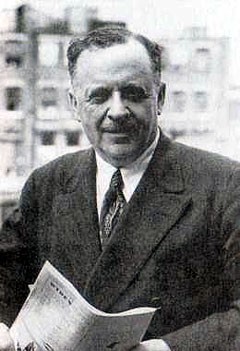 Edward Bernays (1891-1995), neveu de Sigmund Freud émigré aux Etats-Unis, est considéré comme le père de la propagande politique institutionnelle et de l’industrie des relations publiques, dont il met au point les méthodes pour des firmes comme Lucky Strike. Son œuvre aborde des thèmes communs à celle de
Edward Bernays (1891-1995), neveu de Sigmund Freud émigré aux Etats-Unis, est considéré comme le père de la propagande politique institutionnelle et de l’industrie des relations publiques, dont il met au point les méthodes pour des firmes comme Lucky Strike. Son œuvre aborde des thèmes communs à celle de  Car l’homme fait partie de ce « gouvernement de l’ombre », aujourd’hui « spin doctors » et autres conseillers en relation publique, qui régit toutes les activités humaines, du choix de nos lessives aux décisions de nos chefs d’Etat. A travers ses multiples exemples aux allures de complot, son oeuvre, Propaganda, est tout à la fois une théorie des relations publiques et le guide pratique de cette « ingénierie du consentement ».
Car l’homme fait partie de ce « gouvernement de l’ombre », aujourd’hui « spin doctors » et autres conseillers en relation publique, qui régit toutes les activités humaines, du choix de nos lessives aux décisions de nos chefs d’Etat. A travers ses multiples exemples aux allures de complot, son oeuvre, Propaganda, est tout à la fois une théorie des relations publiques et le guide pratique de cette « ingénierie du consentement ».

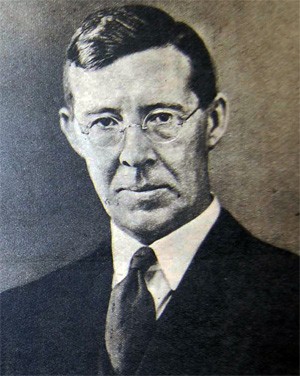
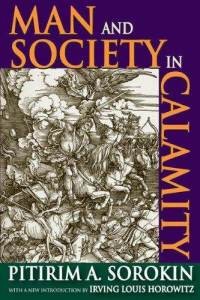 Sorokin was especially interested in the process by which societies change cultural orientations. He opposed the view, held by communists, that social change must be imposed externally, such as by a revolution. His principle of imminent change states that external forces are not necessary: societies change because it is in their nature to change. Although sensate or ideational tendencies may dominate at any given time, every culture contains both mentalities in a tension of opposites. When one mentality becomes stretched too far, it sets in motion compensatory transformative forces.
Sorokin was especially interested in the process by which societies change cultural orientations. He opposed the view, held by communists, that social change must be imposed externally, such as by a revolution. His principle of imminent change states that external forces are not necessary: societies change because it is in their nature to change. Although sensate or ideational tendencies may dominate at any given time, every culture contains both mentalities in a tension of opposites. When one mentality becomes stretched too far, it sets in motion compensatory transformative forces.


 There is no talk in this view of higher education about shared governance between faculty and administrators, nor of educating students as critical citizens rather than potential employees of Wal-Mart. There is no attempt to affirm faculty as scholars and public intellectuals who have both a measure of autonomy and power. Instead, faculty members are increasingly defined less as intellectuals than as technicians and grant writers. Students fare no better in this debased form of education and are treated either as consumers or as restless children in need of high-energy entertainment—as was made clear in the recent Penn State scandal. Nor is there any attempt to legitimate higher education as a fundamental sphere for creating the agents necessary for an aspiring democracy. This neoliberal corporatized model of higher education exhibits a deep disdain for critical ideals, public spheres, and practices that are not directly linked to market values, business culture, the economy, or the production of short term financial gains. In fact, the commitment to democracy is beleaguered, viewed less as a crucial educational investment than as a distraction that gets in the way of connecting knowledge and pedagogy to the production of material and human capital.
There is no talk in this view of higher education about shared governance between faculty and administrators, nor of educating students as critical citizens rather than potential employees of Wal-Mart. There is no attempt to affirm faculty as scholars and public intellectuals who have both a measure of autonomy and power. Instead, faculty members are increasingly defined less as intellectuals than as technicians and grant writers. Students fare no better in this debased form of education and are treated either as consumers or as restless children in need of high-energy entertainment—as was made clear in the recent Penn State scandal. Nor is there any attempt to legitimate higher education as a fundamental sphere for creating the agents necessary for an aspiring democracy. This neoliberal corporatized model of higher education exhibits a deep disdain for critical ideals, public spheres, and practices that are not directly linked to market values, business culture, the economy, or the production of short term financial gains. In fact, the commitment to democracy is beleaguered, viewed less as a crucial educational investment than as a distraction that gets in the way of connecting knowledge and pedagogy to the production of material and human capital. The view of higher education as a democratic public sphere committed to producing young people capable and willing to expand and deepen their sense of themselves, to think the “world” critically, “to imagine something other than their own well-being,” to serve the public good, and to struggle for a substantive democracy has been in a state of acute crisis for the last thirty years.
The view of higher education as a democratic public sphere committed to producing young people capable and willing to expand and deepen their sense of themselves, to think the “world” critically, “to imagine something other than their own well-being,” to serve the public good, and to struggle for a substantive democracy has been in a state of acute crisis for the last thirty years.
 Le revenu de citoyenneté a été défendu par des hommes venus de la droite comme de la gauche. Il relève malheureusement d’idées floues et de beaucoup de confusion.
Le revenu de citoyenneté a été défendu par des hommes venus de la droite comme de la gauche. Il relève malheureusement d’idées floues et de beaucoup de confusion.







